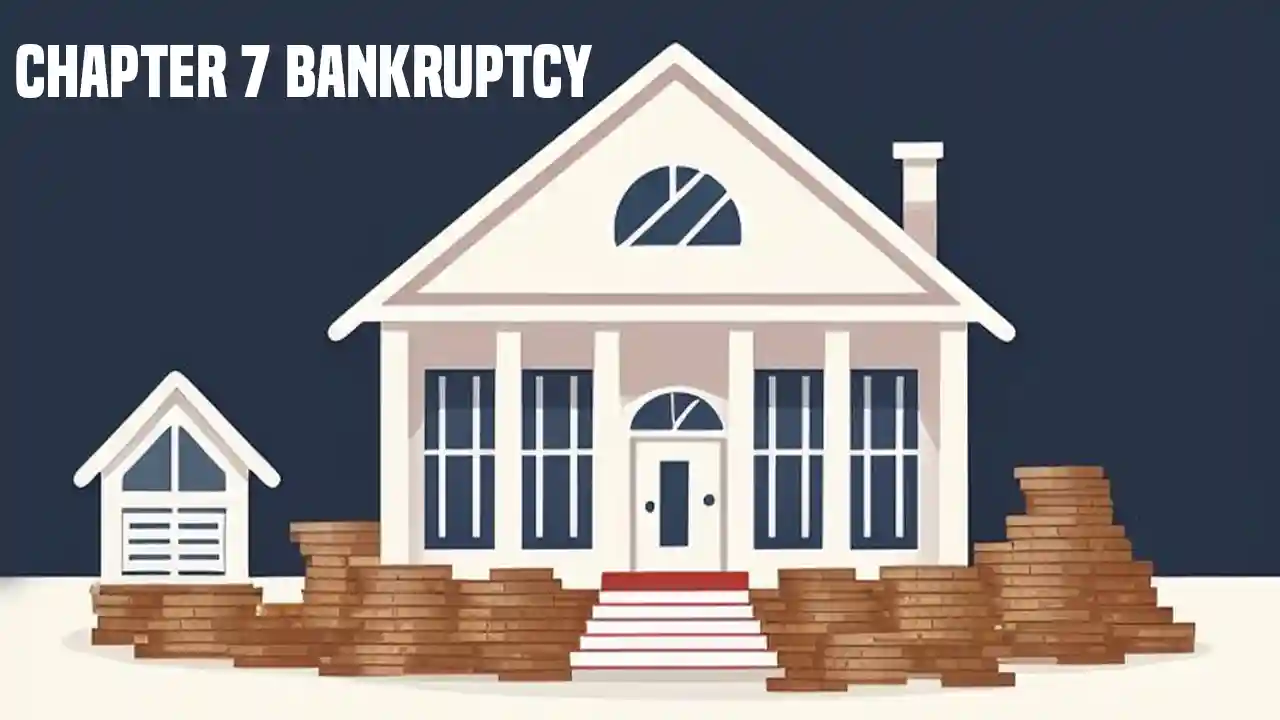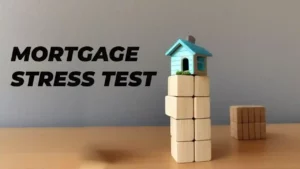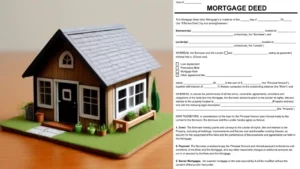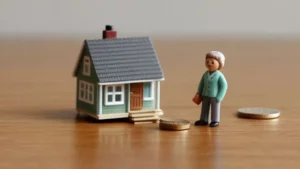Mortgagerateslocal.com – If you have filed for bankruptcy, you may be wondering how to settle your second mortgage after chapter 7. A second mortgage can be used for various purposes, such as home improvement, debt consolidation, or education expenses.
A second mortgage can be a source of financial stress, especially if you are struggling to make the monthly payments. In some cases, you may be able to discharge your second mortgage in Chapter 7 bankruptcy, which means that you will no longer be liable for the debt.
However, this does not mean that the lien on your home will be removed. The lien is the legal right of the lender to take your property if you default on the loan. Therefore, even if you discharge your second mortgage in Chapter 7 bankruptcy, the lender can still foreclose on your home if you stop paying the loan.
This can put your home at risk of being sold to pay off the debt. To avoid this scenario, you may want to consider settling your second mortgage after Chapter 7 bankruptcy. In exchange, the lender will release the lien on your home and cancel the remaining balance of the loan. This can help you save money, avoid foreclosure, and protect your home equity.
What is Chapter 7 Bankruptcy?
Chapter 7 bankruptcy is a legal process that allows you to wipe out most of your unsecured debts, such as credit cards, medical bills, and personal loans. It is also known as liquidation bankruptcy, because the bankruptcy trustee may sell some of your nonexempt assets to pay back your creditors. However, most Chapter 7 filers do not lose any property, because they can protect it with exemptions.
To qualify for Chapter 7 bankruptcy, you must pass the means test, which compares your income to the median income of your state. If your income is below the median, you can file for Chapter 7. If your income is above the median, you may still be able to file for Chapter 7 if you can show that you do not have enough disposable income to pay your debts.
Chapter 7 bankruptcy typically takes about three to four months to complete. During this time, you will have to attend a meeting of creditors, where the trustee and your creditors can ask you questions about your finances. You will also have to complete a financial management course before you can receive a discharge.
A discharge is a court order that releases you from your personal liability for your discharged debts. This means that you do not have to pay them back, and your creditors cannot contact you or take any legal action against you to collect them. However, a discharge does not affect any liens that your creditors have on your property, such as your mortgages. This means that your mortgage lenders can still foreclose on your home if you do not make your payments.
How Does Chapter 7 Bankruptcy Affect Your Second Mortgage?
A second mortgage is a secured debt, which means that it is backed by collateral, in this case, your home. When you take out a second mortgage, you agree to give your lender a lien on your home, which gives them the right to sell it if you default on your loan. This lien remains on your home even after you file for Chapter 7 bankruptcy and get a discharge.
However, Chapter 7 bankruptcy may affect your second mortgage in two ways:
- It may eliminate your personal liability for the second mortgage. This means that your lender cannot sue you or garnish your wages to collect the debt. However, they can still foreclose on your home if you do not make your payments.
- It may reduce the value of your second mortgage lien. This depends on the value of your home and the amount of your first mortgage. If your home is worth less than what you owe on your first mortgage, your second mortgage is considered to be unsecured or partially secured. This means that your lender cannot recover the full amount of their loan by selling your home. In this case, your second mortgage may be treated as an unsecured debt in Chapter 7 bankruptcy, and may be discharged or reduced.
How to Settle Your Second Mortgage After Chapter 7 Bankruptcy?
If you want to keep your home after Chapter 7 bankruptcy, you will have to continue making your mortgage payments, both on your first and second mortgages. However, if you are having trouble affording your second mortgage, or if you owe more on your mortgages than your home is worth, you may want to consider settling your second mortgage after getting a discharge.
Settling your second mortgage means that you negotiate with your lender to accept a lump sum payment that is less than the full amount of your debt, in exchange for releasing their lien on your home. This way, you can save money, avoid foreclosure, and improve your credit score.
However, settling your second mortgage is not easy, and it involves some risks and challenges. Here are some steps and tips to help you settle your second mortgage after Chapter 7 bankruptcy:
1. Assess Your Situation
Before you approach your second mortgage lender with a settlement offer, you need to assess your situation and determine if settling is the best option for you. You need to consider the following factors:
- The value of your home. You can use online tools, such as Zillow or Trulia, to get an estimate of your home’s current market value. You can also hire a professional appraiser to get a more accurate valuation.
- The amount of your first mortgage. You need to know how much you owe on your first mortgage, and how much equity you have in your home. Equity is the difference between the value of your home and the amount of your mortgages. For example, if your home is worth $200,000, and you owe $150,000 on your first mortgage, you have $50,000 of equity in your home.
- The amount of your second mortgage. You need to know how much you owe on your second mortgage, and how much of it is secured or unsecured. For example, if you owe $50,000 on your second mortgage, and your home is worth $200,000, but you owe $150,000 on your first mortgage, your second mortgage is partially secured by $50,000 of equity, and partially unsecured by the remaining $50,000.
- Your income and expenses. You need to know how much you earn and spend each month, and how much you can afford to pay your second mortgage lender. You also need to factor in your taxes, as settling your second mortgage may have tax consequences. Generally, the IRS considers forgiven debt as taxable income, unless you qualify for an exception, such as insolvency or bankruptcy. You may want to consult a tax professional to determine your tax liability.
Based on these factors, you can decide if settling your second mortgage is feasible and beneficial for you. Generally, settling your second mortgage is more likely to succeed if:
- Your home is worth less than what you owe on your first mortgage, or your second mortgage is mostly unsecured. This means that your second mortgage lender has little incentive to foreclose on your home, as they would not recover much from the sale. They may be more willing to accept a settlement offer, as they would get something rather than nothing.
- You have a lump sum of money that you can offer your second mortgage lender. This could be from your savings, a gift, a loan, or a sale of an asset. The more money you can offer, the more likely your lender will accept your offer. However, you should not offer more than you can afford, or more than the value of your second mortgage lien.
- You have a hardship that prevents you from making your second mortgage payments. This could be a job loss, a medical emergency, a divorce, or a death in the family. You will need to provide proof of your hardship to your lender, such as a letter, a bank statement, or a medical bill.
2. Contact Your Second Mortgage Lender
Once you have assessed your situation and decided to settle your second mortgage, you need to contact your second mortgage lender and express your interest in settling your debt. You can do this by phone, email, or letter.
You should explain your situation and your reasons for wanting to settle. You should also provide your lender with your most recent tax assessment, appraisal, or other evidence of your home’s value, to show them that your loans exceed the value of your home.
3. Make a Settlement Offer
After you have contacted your second mortgage lender and obtained their settlement policy and procedures, you need to make a settlement offer that is realistic and reasonable. You should consider the following factors when making your offer:
- The value of your second mortgage lien. This is the amount of equity that your second mortgage lender can recover from selling your home. For example, if your home is worth $200,000, and you owe $150,000 on your first mortgage and $50,000 on your second mortgage, your second mortgage lien is worth $50,000. This is the maximum amount that your lender can expect to get from foreclosing on your home.
- The cost and risk of foreclosure. Foreclosure is a lengthy and expensive process that involves legal fees, court costs, and maintenance costs. It also exposes your lender to the risk of losing money if the market value of your home declines, or if there are other liens or claims on your property. Your lender may prefer to avoid foreclosure and accept a settlement offer that is less than the value of their lien, but more than the cost and risk of foreclosure.
- The amount of your discharge. If your second mortgage was discharged or reduced in Chapter 7 bankruptcy, your lender may be more willing to settle, as they know that they cannot pursue you personally for the debt. However, they may also demand a higher settlement amount, as they have lost some of their leverage over you.
Based on these factors, you should make a settlement offer that is within the range of 10% to 50% of the value of your second mortgage lien. For example, if your second mortgage lien is worth $50,000, you could offer between $5,000 and $25,000 as a settlement amount.
You should also explain why you are offering this amount, and how you plan to pay it. You should also ask your lender to provide you with a written confirmation of the settlement agreement, and a release of lien upon payment.
4. Negotiate with Your Second Mortgage Lender
Once you have made your settlement offer, you need to negotiate with your second mortgage lender until you reach a mutually acceptable agreement. This may take several rounds of communication, and you may have to adjust your offer based on your lender’s response. You should keep the following tips in mind when negotiating with your second mortgage lender:
- Be polite and respectful. You should maintain a professional and courteous tone throughout the negotiation process. You should avoid being rude, aggressive, or emotional, as this may damage your relationship with your lender and reduce your chances of reaching a settlement.
- Be persistent and patient. You should follow up with your lender regularly and keep track of your communication. You should also be prepared to wait for your lender’s response, as they may have to review your offer and consult with their supervisors. You should not give up or accept a lowball offer, as your lender may be testing your resolve and willingness to settle.
- Be flexible and creative. You should be willing to compromise and explore different options to reach a settlement. For example, you could offer to pay a higher amount in exchange for a longer payment period, or a lower amount in exchange for a shorter payment period. You could also offer to pay in installments, or to secure your payment with another asset, such as a car or a jewelry. You should also be open to counteroffers and suggestions from your lender, as they may have some ideas that could benefit both parties.
5. Finalize the Settlement Agreement
After you have negotiated with your second mortgage lender and agreed on a settlement amount and terms, you need to finalize the settlement agreement and make the payment. You should do the following steps to finalize the settlement agreement:
- Review the settlement agreement carefully. You should read the settlement agreement thoroughly and make sure that it reflects the terms that you have agreed upon. You should also look for any hidden fees, charges, or clauses that could affect your rights or obligations. You should also check the accuracy of your personal and financial information, such as your name, address, account number, and payment details.
- Sign the settlement agreement and keep a copy. You should sign the settlement agreement and return it to your lender as soon as possible. You should also keep a copy of the signed settlement agreement for your records. You should also ask your lender to provide you with a receipt of payment and a release of lien upon payment.
- Make the payment and get a release of lien. You should make the payment according to the terms of the settlement agreement, and keep a proof of payment, such as a bank statement, a check stub, or a money order receipt. You should also ask your lender to send you a release of lien, which is a document that shows that your lender has removed their lien on your home. You should record the release of lien with the county recorder’s office, and keep a copy for your records.
Conclusion
Settling your second mortgage after Chapter 7 bankruptcy can be a viable option to save money, avoid foreclosure, and improve your credit score. However, it is not easy, and it involves some risks and challenges. You need to assess your situation, contact your lender, make an offer, negotiate, and finalize the agreement.
You also need to be aware of the tax implications and the legal consequences of settling your second mortgage. You may want to consult a bankruptcy attorney, a financial advisor, or a tax professional to help you with the process and protect your interests.




